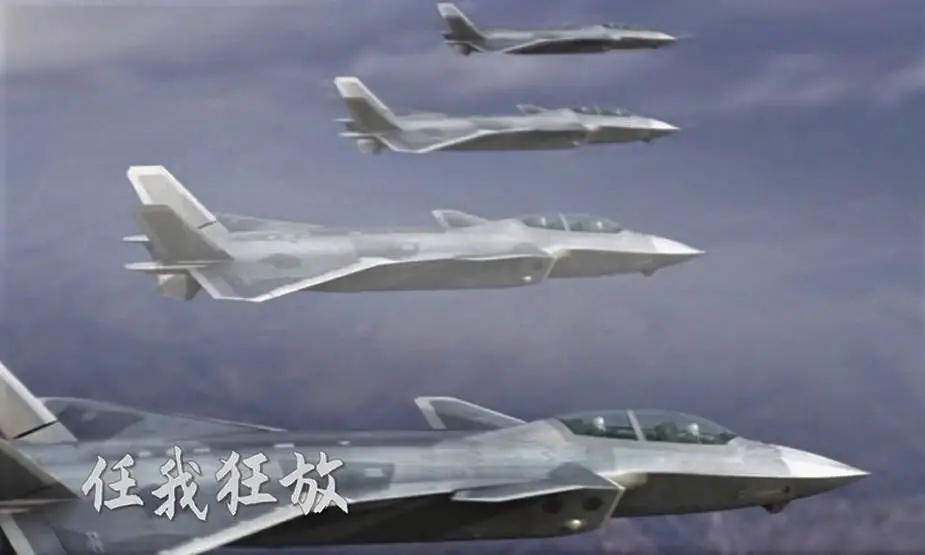A twin-seat variation of China's J-20 stealth fighter jet and a J-20 version equipped with a domestically made engine have been spotted for the first time in official videos recently released by its developer and the People's Liberation Army (PLA) Air Force, only days before the 10th anniversary on Monday of the aircraft's maiden flight. Liu Xuanzun reports on Global Times.
Follow Air Recognition on Google News at this link

The twin-seat variant of the J-20 fighter jet, depicted by computer-generated imagery, is seen in a video released by AVIC celebrating the 10th anniversary of the aircraft's maiden flight in 2021 (Picture surce: screenshot from the AVIC video)
The twin-seat variation of the J-20 could be used for electronic warfare, command of wingman drones or bombing, and the domestic engine means the J-20 is no longer reliant on Russian engines. Depicted by computer-generated imagery, four twin-seat J-20 variations were seen flying in formation in a video released by state-owned Aviation Industry Corp of China (AVIC), the developer of the aircraft, on January 8, in celebration of the 10th anniversary on January 11 of the original aircraft's maiden flight, Liu Xuanzun reports.
This is the first time the twin-seat J-20 has been featured in an official promotional source, although media reports had speculated about its existence for years. It will also make the J-20 variation the world's first twin-seat stealth fighter jet, media reported. By adding another seat to the cockpit, the aircraft could, in exchange for some level of stealth capability and maneuverability, carry a second pilot designated for more complicated tasks such as electronic warfare, command of wingman drones or tactical bombing, a Chinese military analyst told the Global Times on Sunday, requesting anonymity.
In a separate video, released on Tuesday by the People's Liberation Army (PLA) Air Force for its pilot recruitment program, Chinese media outlets identified a J-20 that is equipped with domestically developed WS-10C engines instead of imported Russian engines. The WS-10C engines provide more powerful thrust than the Russian engines previously used on the J-20, since the Chinese engines use full authority digital engine control technology and improved afterburners, the Passion News report said. Domestic engines will not only let the J-20 become stronger, but also enable the mass production of the aircraft without the limitation of imported engines, analysts said, noting that the J-20 will eventually use the WS-15, an even more powerful domestically developed engine, Liu Xuanzun concludes.
















